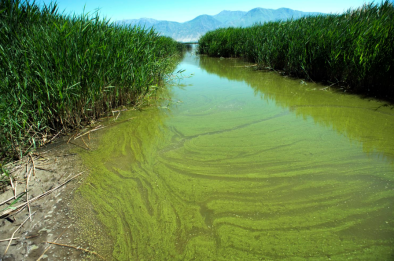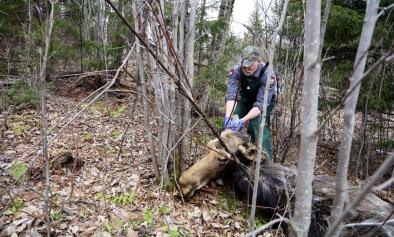Science Source
Plague risk in the western United States over seven decades of environmental change
Study key findings & significance
- Due to climate change, rodent communities at high elevations have become more conducive to the establishment of plague reservoirs—with suitability increasing up to 40% in some places—and that spillover risk to humans at mid-elevations has increased as well.
- Anomalously warm and anomalously wet, cold years can increase plague prevalence and spillover risk, respectively, through ripple effects of ecosystem productivity on rodents and flea populations.
- The data supports a view of plague risk where weather conditions (and
Related Content
Science Source
| Scientific Reports
Viral emergence in marine mammals in the North Pacific may be linked to Arctic sea ice reduction
E. VanWormer, J. A. K. Mazet, A. Hall et al
Headline

Nov 12, 2019 | CNN
There's a hidden consequence of climate change: A deadly virus that's killing key marine species
Headline

Aug 28, 2019 | Reuters
As the climate shifts, Central America confronts a deadly dengue...
Headline

Jun 25, 2018 | Washington Post via AP
Warming drives spread of toxic algae in US, researchers say
Science Source
Wildfire response to changing daily temperature extremes in California’s Sierra Nevada
Study key findings & significance
- A rise of 1.8°F (1°C) in mean summer temperature over the past 20 years increased the risk of a fire starting on a given day — either by human activity or a lightning strike — by 19 to 22 percent, and increased the burned area by 22 to 25 percent.
- The research examined daily temperatures and data from nearly 450 Sierra Nevada fires from 2001 to 2020 and projected the analysis into the future.
- The number of fires could increase by about 20 percent or more by the 2040s, and the total burned area could increase by about
Related Content
Science Source
Forest fires and climate-induced tree range shifts in the western US
Study key findings & significance
- Migrant trees are finding new homes in forests across the Western U.S., as changing climate conditions — accelerated by wildfires — force them to seek out cooler, wetter locations.
- The study provides the first empirical evidence that fires are hastening the movement of trees, likely by diminishing competition from established species
- The researchers analyzed U.S. Forest Service data from more than 74,000 sites across nine Western U.S.
Related Content
Science Source
| Global Change Biology
Decadal-scale phenology and seasonal climate drivers of migratory baleen whales in a rapidly warming marine ecosystem
Daniel E. Pendleton, Morgan W. Tingley, Laura C. Ganley et al
Headline

May 19, 2022 | Climate Nexus Hot News
Climate Change Great For Winter Ticks, Very Bad For Moose Calves
Science Source
Climate change increases cross-species viral transmission risk
Colin J. Carlson, Gregory F. Albery, Cory Merow et al
Science Source
| Journal of Animal Ecology
Climate change affects bird nesting phenology: Comparing contemporary field and historical museum nesting records
John M. Bates, Mason Fidino, Laurel Nowak-Boyd et al


